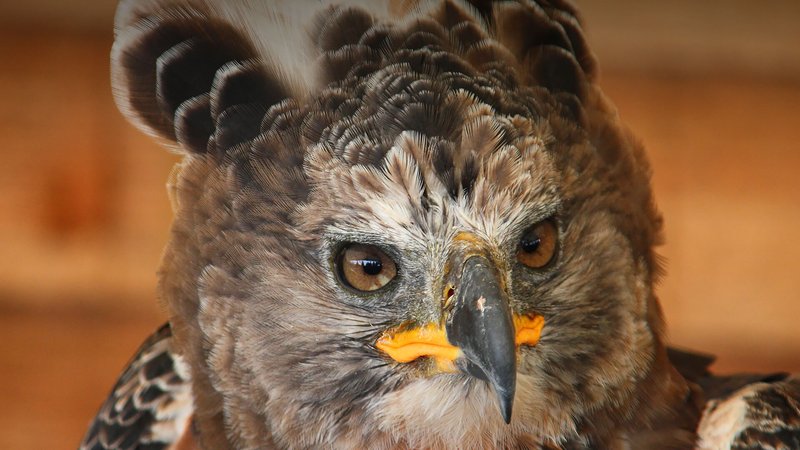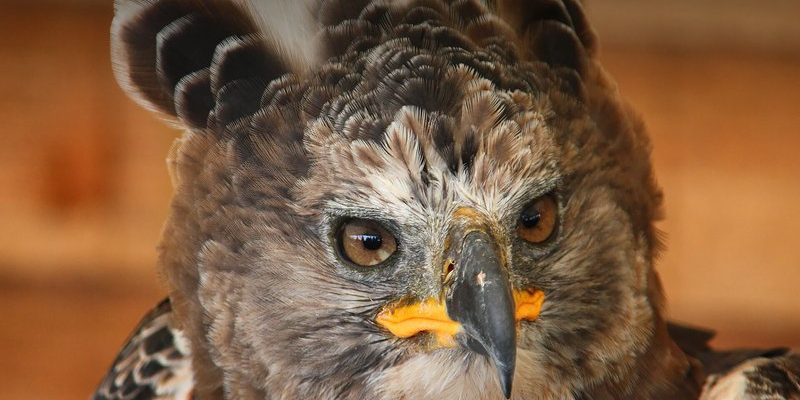
Crowned eagles are among the most powerful raptors, often found in the forests and mountains of Africa. They are known not only for their impressive hunting skills but also for their fascinating vocalizations. Just like how we use different tones and pitches in our speech to express feelings, crowned eagles do the same. So, grab a cup of coffee, and let’s dive into the incredible world of crowned eagle vocalizations and what each sound tells us.
The Importance of Vocalizations in Crowned Eagles
Vocalizations play a vital role in how crowned eagles interact with one another. Just like how we use words to express ourselves, these birds rely on sounds to communicate important messages. They might be announcing their presence, defending their territory, or calling for a mate. Understanding these vocalizations helps us appreciate the complexity of their social interactions.
Crowned eagles produce a variety of sounds, each carrying its own meaning. For instance, their calls can vary in pitch and intensity, often reflecting the eagle’s mood or urgency. Imagine being in a crowded room full of chatter. You’d instinctively know when someone is excited or upset based on their voice, right? The same goes for crowned eagles—they use their vocalizations to convey emotions and intentions.
Another layer of meaning comes from the context in which these sounds are made. A call during mating season might sound different than a call made during a territorial dispute. Recognizing these nuances allows us to decode the messages they send to each other.
Main Vocalizations and Their Meanings
When it comes to crowned eagle vocalizations, they typically have a few key calls that stand out. Here’s a closer look at some of the most common sounds you might hear:
- Contact Calls: These are softer, short calls that often signal the presence of a partner or offspring nearby.
- Mating Calls: During the breeding season, these calls are more pronounced and melodic, aimed at attracting a mate.
- Alarm Calls: These are loud and harsh, used to warn other eagles of potential threats, like predators or intruders.
- Territorial Calls: When an eagle is defending its territory, it may emit deep, resonant calls, signaling dominance.
Let’s break down these vocalizations a bit more.
Contact calls are like the daily check-ins we have with friends. They keep connections strong. Mating calls, on the other hand, are a bit more romantic, akin to serenading someone you’re interested in. Alarm calls act like an urgent shout, warning everyone in the vicinity to be cautious. And territorial calls? Think of them as a firm “this is my space!” declaration. Each sound serves a unique purpose, helping the eagle navigate its environment.
The Science Behind Crowned Eagle Sounds
So, what makes these vocalizations possible? The anatomy of an eagle is quite fascinating. Their vocal organs, known as syrinx, allow them to produce a wide range of sounds. Unlike humans, who use their vocal cords, birds have this special organ located at the base of their trachea. This unique structure gives them the ability to create complex sounds that are pivotal for communication.
Interestingly, the pitch and volume of an eagle’s call can be influenced by various factors—like their age, health, and even the environment. For example, younger eagles may have higher-pitched calls compared to mature adults. This difference can help establish a hierarchy within eagle families or social groups.
Listening closely to these vocalizations can also provide insights into the overall health of a population. If you start hearing fewer alarm calls, for instance, it might indicate a decline in the local eagle population or an increase in predation.
You might be wondering how vocalizations relate to hunting. For crowned eagles, communication is crucial in their hunting strategies. When hunting in pairs or groups, these birds often use specific calls to coordinate their actions.
Imagine a hunter quietly signaling a partner through a soft whisper. That’s how crowned eagles might use their contact calls. They might communicate their position to ensure they don’t scare off potential prey. Also, alarm calls can alert the group to any sudden movements from potential threats.
By listening to each other, they can successfully navigate their environment while maximizing their chances of catching prey. It’s a team effort that showcases their intelligence and adaptability.
As we learn more about crowned eagle vocalizations, the importance of protecting their habitat becomes clear. These vocalizations are not just fascinating; they’re essential for the species’ survival. When their natural environments are threatened by deforestation or human encroachment, their communication can be hampered.
For bird enthusiasts and conservationists, listening to these sounds can also help monitor the health of eagle populations. By recording vocalizations, researchers can track changes over time and understand how environmental factors affect their behaviors.
It’s a reminder of how connected we all are—the circumstances surrounding crowned eagles impact their vocal expressions, which, in turn, highlights the urgent need for conservation efforts.
If you’re itching to hear these beautiful calls for yourself, there are several places you can explore. Crowned eagles typically inhabit dense forests, from the lowland areas to wooded hillsides. National parks and wildlife reserves are great spots for eagle watching.
Some popular locations include:
- Kruger National Park: Renowned for its wildlife, this park offers a chance to hear crowned eagles in their natural habitat.
- Mount Kenya: The mixed forests here are home to these majestic birds, making it a good spot for bird watchers.
- Waza National Park, Cameroon: This area is rich in biodiversity and known for its eagle populations.
Bringing binoculars and a keen ear can turn a simple hike into an unforgettable birding experience. Just remember to be respectful of their space, as their calls are best enjoyed from a distance to avoid disrupting their natural behaviors.
Crowned eagle vocalizations offer a fascinating window into the lives of these incredible birds. Their sounds are more than just noise; they carry messages of connection, warning, and presence. By understanding what these vocalizations mean, we gain a deeper appreciation for the social dynamics of crowned eagles and the importance of conserving their habitats.
So, next time you’re out in nature, take a moment to listen. You might just hear the regal calls of crowned eagles echoing through the trees. Understanding their communication not only enriches your outdoor experience but also connects you to the broader conversation about wildlife conservation. Let’s celebrate the call of the crowned eagle and work together to ensure their songs continue to resonate through the wild for generations to come.

